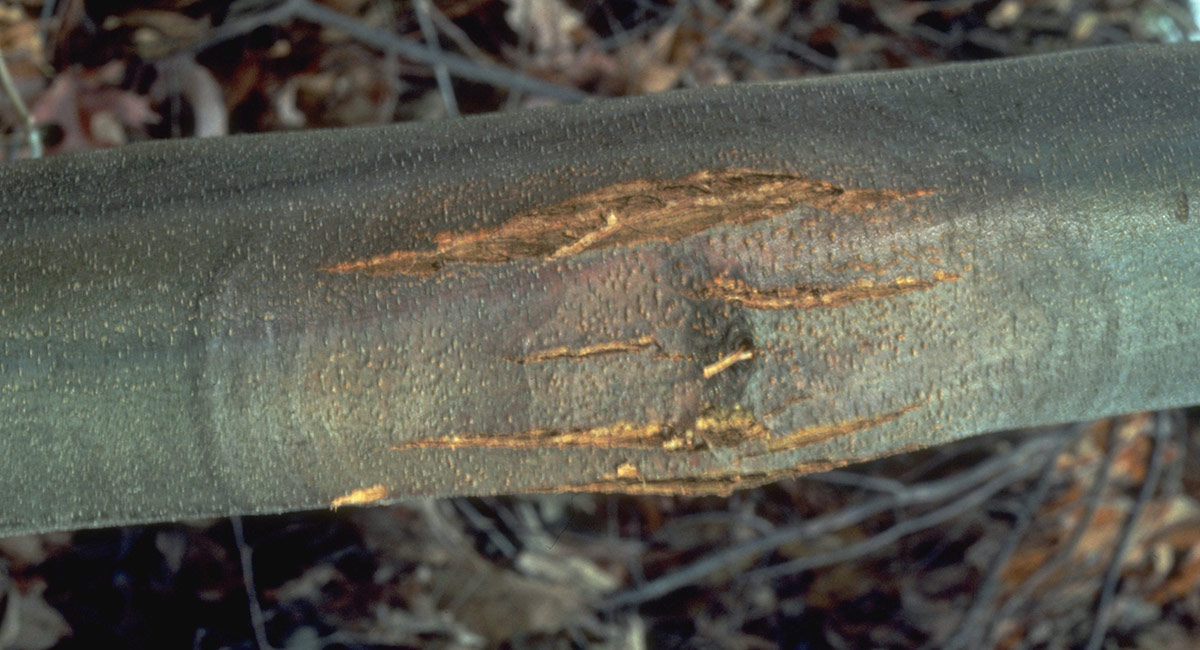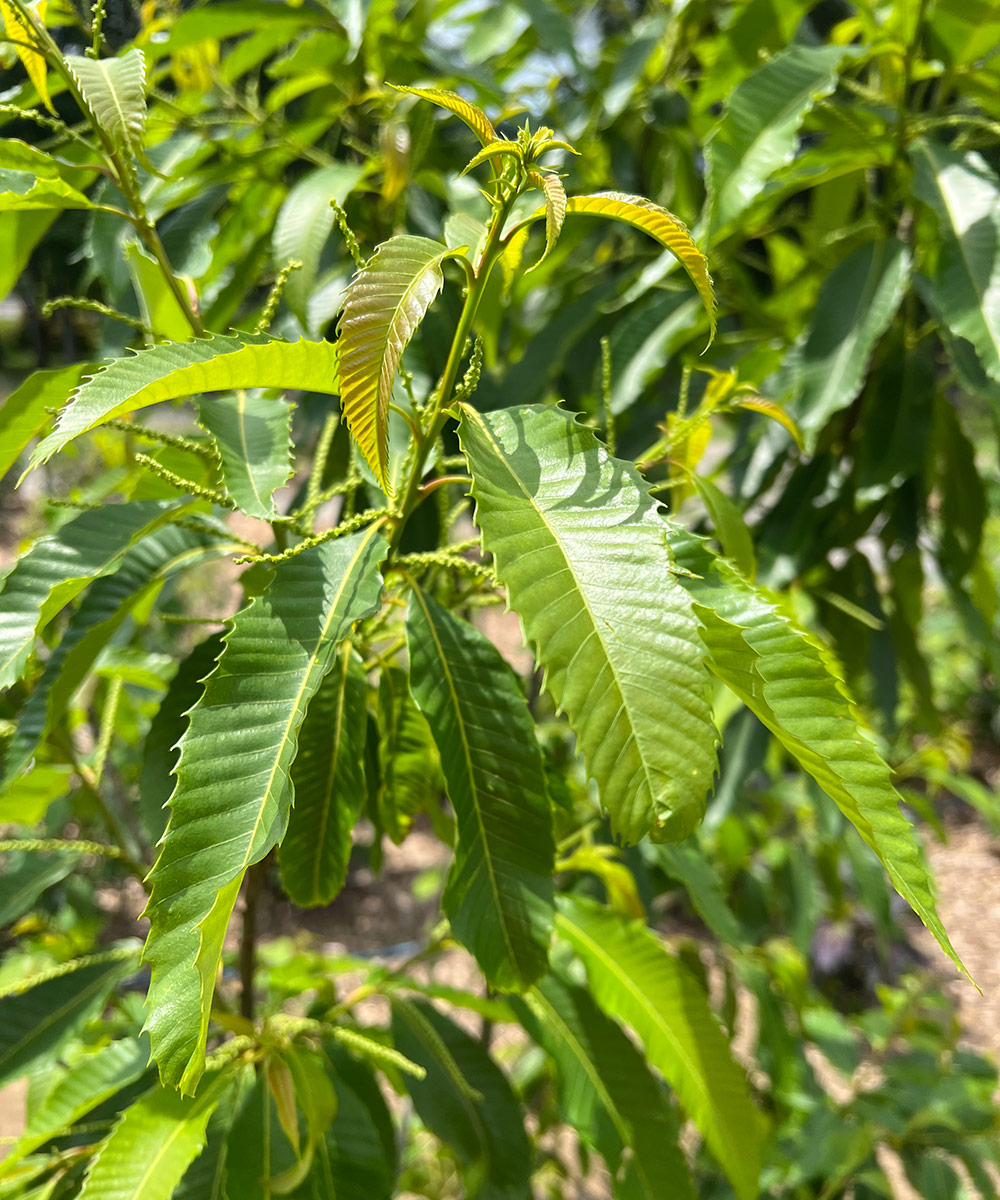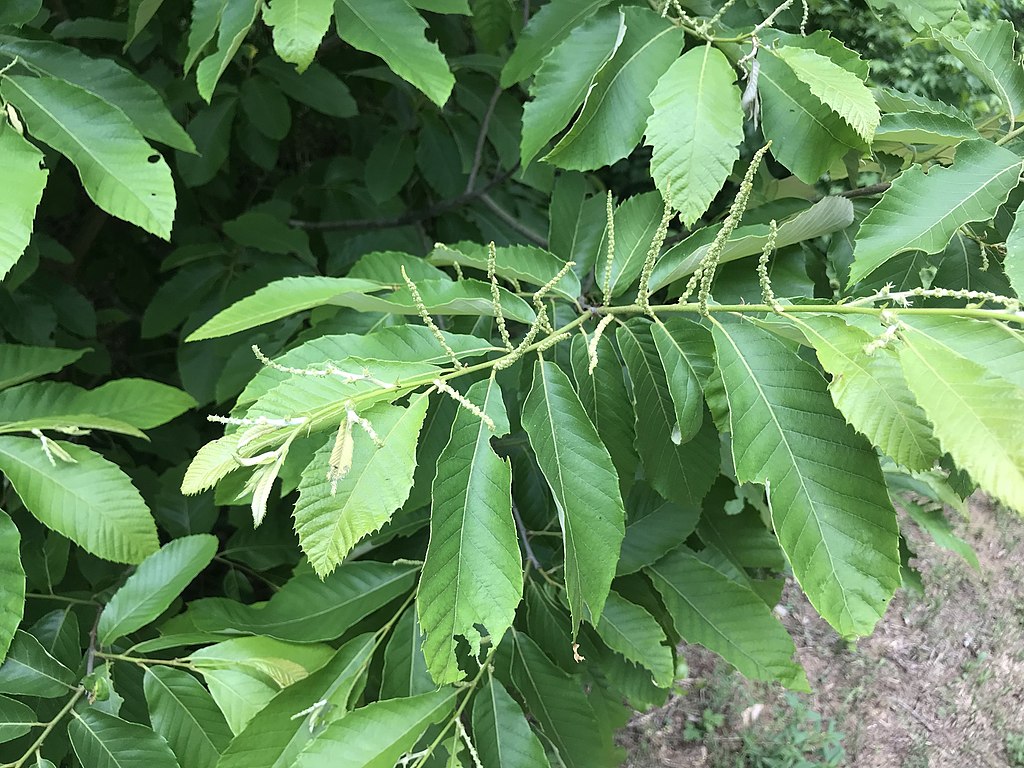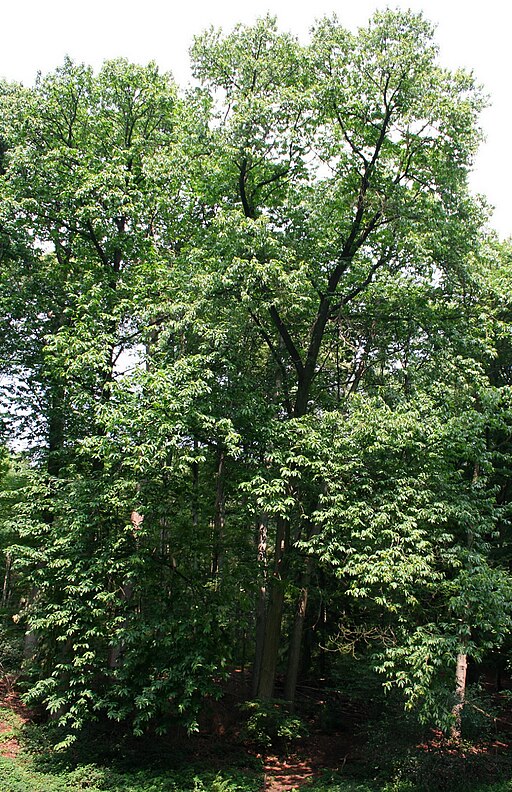[ad_1]
Several times a year someone sends me a photo of a tree they believe to be an American chestnut (Castanea dentata, Zones 4–8). Frequently what they actually have sent is a photo of an Asian chestnut species or Allegheny chinquapin (Castanea pumila, Zones 5–9), another species native to the eastern United States. From time to time, I have seen the sprouts of a true American chestnut tree in the wild. American chestnuts have three nuts per bur and canoe-shaped leaves with deeply toothed margins. Their buds are smooth, brown, pointed, and usually askew on the twig. However, the sprouts I’ve seen pale in comparison to what once dominated our eastern forests. The American chestnut once thrived throughout the forests of the eastern United States, leaving its mark on both the landscape and lives of the people who inhabited the region. This tree played a crucial role in the cultural, economic, and ecological tapestry of the South and southeastern United States, making it an integral part of our region’s history. Trees were huge, straight pillars like our native tulip trees (Liriodendron tulipifera, Zones 4–9)—and on a massive scale (from 50 to 100 feet tall). Learn more about the history of this magnificent species and the current state of American chestnut tree conservation efforts here.
|
|
|
The cultural importance of American chestnut trees
Long before Europeans arrived on the continent, Native American tribes cherished the American chestnut for its bountiful harvest. The chestnut trees provided a valuable source of food in the form of their nuts, which were consumed fresh, roasted, or ground into flour.
With the arrival of European colonists, the importance of American chestnuts grew even more. The settlers quickly recognized the potential of American chestnut trees. They utilized the wood for a variety of purposes, from building fence posts to furniture. The nuts became a valuable food source for settlers and their farm animals, particularly during the winter months when other crops were scarce.

The introduction of chestnut blight
In the early 1900s, a fungal pathogen known as chestnut blight (Cryphonectria parasitica) was accidentally introduced to the United States. The blight spread rapidly throughout the eastern North America, decimating the American chestnut population.
The loss of American chestnut trees had a profound impact on the culture and ecology of the eastern United States. The tree was not just a utilitarian resource but a symbol of strength, resilience, and abundance.
Additionally, the chestnut tree played a crucial role in the region’s ecology as a dominant species, providing food and habitat for countless species. The loss of the chestnut disrupted our forests, leading to lasting changes in species composition and overall biodiversity.

Conservation efforts are still ongoing
Efforts to conserve and restore the American chestnut are continuing today. Organizations such as the American Chestnut Foundation and several universities have dedicated resources to breeding blight-resistant chestnut trees. These efforts offer hope for the eventual restoration of American chestnuts throughout its native range, including the southern and southeastern United States.
In addition to breeding blight-resistant American chestnut trees, some organizations have tried crossing American chestnuts with various Asian chestnut species in an effort to create blight resistance. Additionally, there are reportedly some hybrid American chestnuts crossed with Allegheny chinquapin.
While the scars left by the chestnut blight are still visible across our region, the story of the American chestnut is not one of finality but rather of resilience and the enduring spirit of restoration. The potential return of American chestnut trees to their former glory would not only revive a vital part of the region’s history but also contribute to ecological conservation. The road ahead is long. For all intents and purposes, the American chestnut is currently functionally extinct, meaning there are not enough remaining individuals to perform ecological roles and/or to sustain a long-term, viable population.

Should I plant an American chestnut?

There are many gardeners who would love to grow an American chestnut. Supposedly blight-resistant hybrids of American chestnut are hard to obtain. Be very cautious when trying to buy these plants online. Often online retailers are making claims that are far ahead of the science. Ask lots of questions, and know what you are buying.
One thing I suggest to gardeners who are interested in the conservation of chestnuts is to buy seedlings of the straight species of American chestnut and hope for the best. Many seedlings will survive to nut-bearing age before succumbing to blight. This could be an important step in the preservation of the American chestnut until scientists figure out how best to conserve the species. Gardeners should expect their trees to get about 4 inches in diameter before succumbing to blight. Again, be cautious when purchasing plants to ensure you know what you are getting. Accepting that the tree will eventually succumb to blight is important. Perhaps the idea that you grew an American chestnut for a short time and enjoyed it will be good enough. Not all plants last forever in our gardens, and growing a chestnut could lead to greater awareness and education for those who visit your garden.
There are still some American chestnut trees lurking in the forests of the eastern United States; several of the largest are in Maine. Hopefully with time and improved breeding, this important native tree can be reestablished in the wild.
For more Southeast regional reports, click here.
—Andy Pulte is a faculty member in the plant sciences department at the University of Tennessee.
[ad_2]


